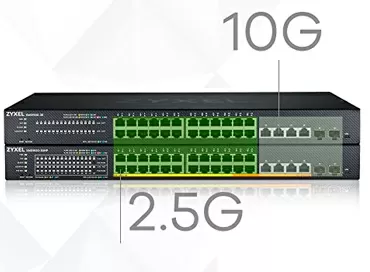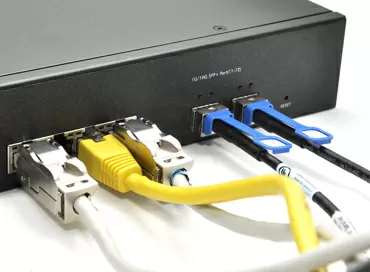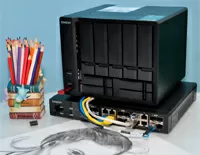Intel's silicon Photonics leads to lower cost of 100G networks
For more than 10 years, Intel has been trumpeting the benefits of silicon Photonics, which has been under development for two decades. Intel itself has long adhered to the concept of unbundled computing and storage devices for data centers, combined through optics. During Intel Interconnect Day 2019, the company revealed that its silicon Photonics has grown from a lab project to a product ready to go to customers.
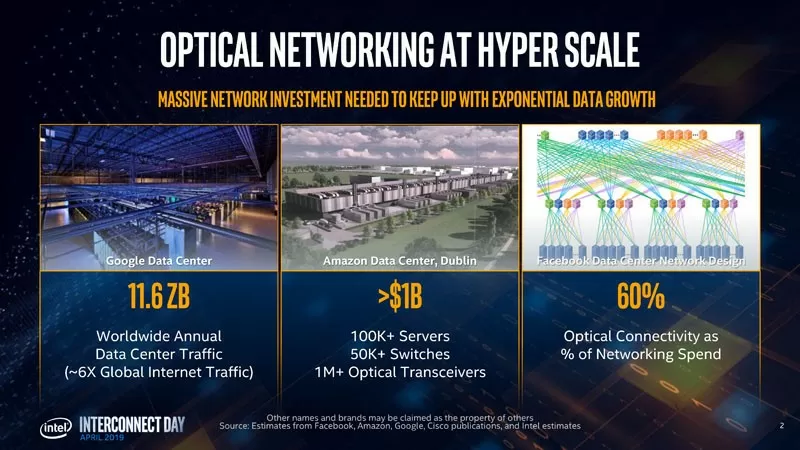
As data transfer speeds increase, conventional copper cables can no longer be used even to connect devices inside a single server Cabinet. If you compared a 3-meter 40-Gigabit DAC cable with a 100-Gigabit one, you probably noticed how much the "weave" has become thicker due to the additional shielding. But high speeds challenge not only the copper carrier, but also multimode fiber.
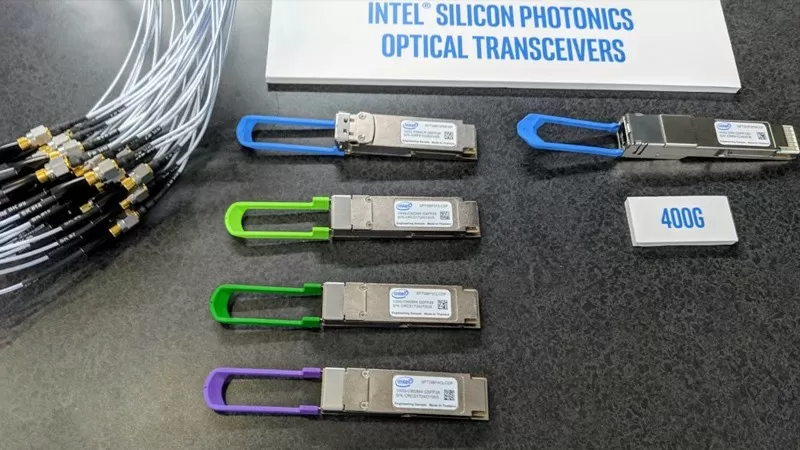
We are told that major digital companies like Amazon, Microsoft, Google, and Facebook have their own views and strategies regarding fast networks. For example, Facebook invests in single-mode fiber to prepare the infrastructure in advance for future updates, and someone chooses what is cheaper right now.

As for 100-Gigabit networks, today about 25% of them are laid on copper twisted pair, 50% - on multimode optics and 25% - on single-mode optics. Intel's share of the 100-Gigabit network market is approximately 30%. This means that Intel's Photonics are delivered to a third of the highest-margin high-speed network market.

Moreover, Intel says that over the past 6 quarters, the company has become the # 1 supplier for 100-Gigabit qsfp CWDM4 transceivers.
Device of transceivers based on silicon Photonics
Today, Intel-based silicon Photonics is already used in transceivers installed in switches for data transfer within the data Center and between data centers. Silicon cannot be the light source needed to create a laser, so the company uses indium phosphide as the source, and then silicon is used to modulate light and other functions.
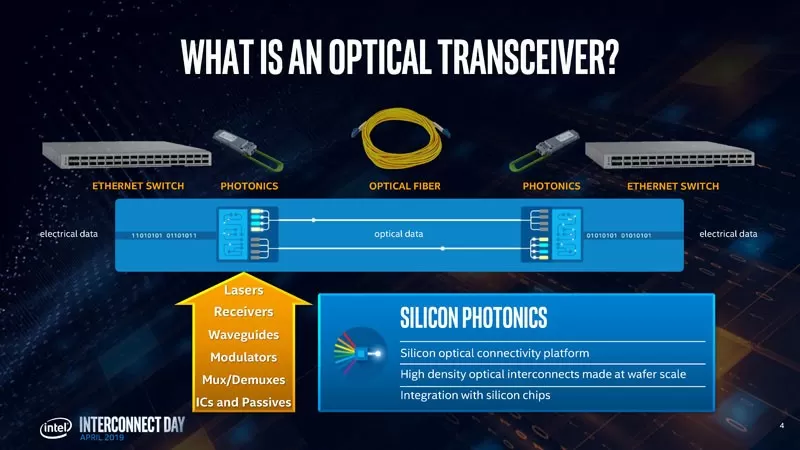
One of the key advantages of silicon Photonics is the ability to embed a laser, photodetector, and modulator on silicon in a single miniature chip. Modern 100-Gigabit optical transceivers use a "Golden box" design, manufactured with the highest laboratory precision, hermetically sealed and consisting of 26 components. Silicon Photonics-based transceivers have a simpler 2-component design, and do not even require tightness during production.

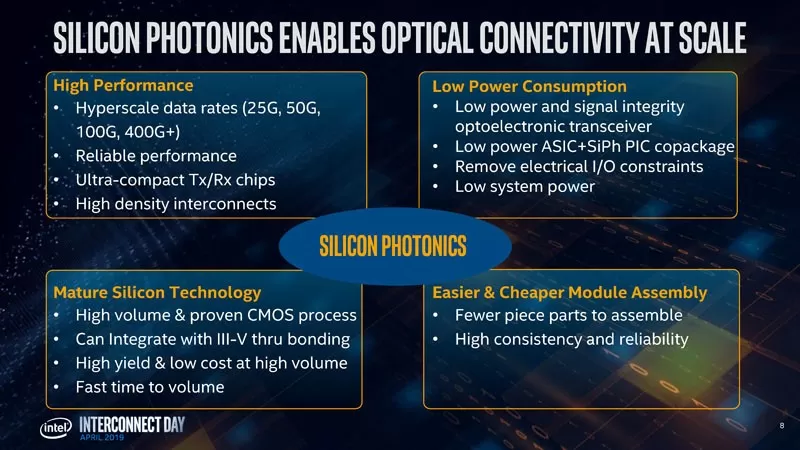

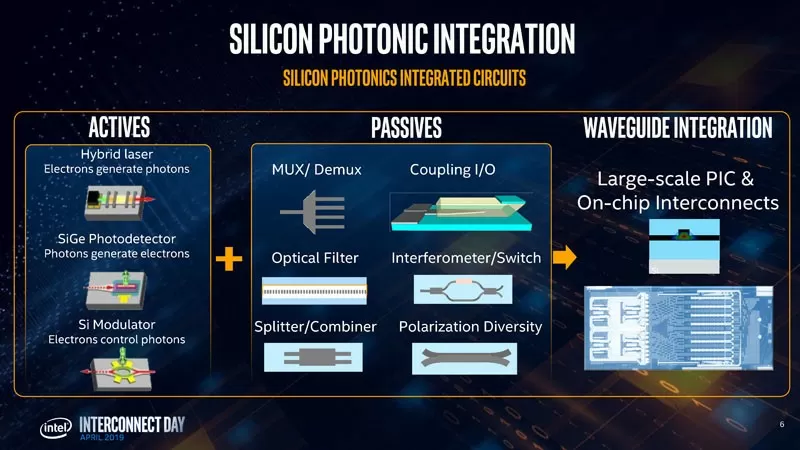
Intel believes that silicon Photonics will allow the production of 100-Gigabit optical modules on a large scale, and large data centers will install millions of 100-Gigabit transceivers.
Next stop-400G
At the OCP Summit 2019 event, Facebook already showed a switch with 400 GBe ports. Analysts believe that by 2021, the market for 400-Gigabit transceivers will reach 1 million units, and the spread of this standard will be as fast as it was with 100-Gigabit networks. Intel has its own 400-Gigabit qsfp-DD DR4 transceiver, which will go into mass production before the end of this year.

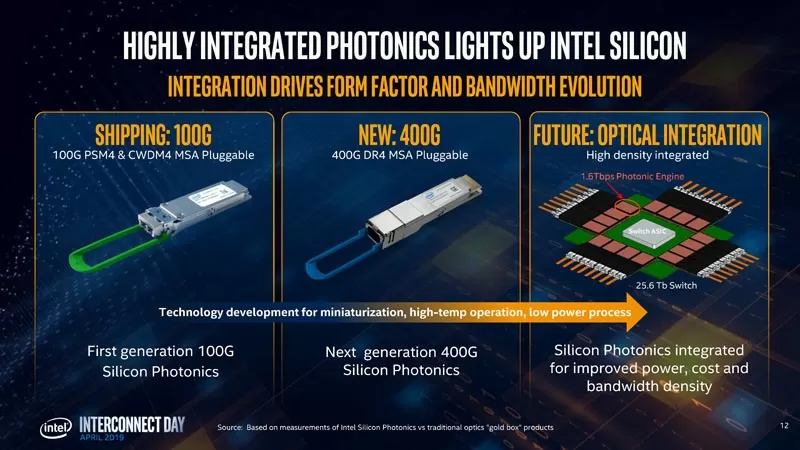
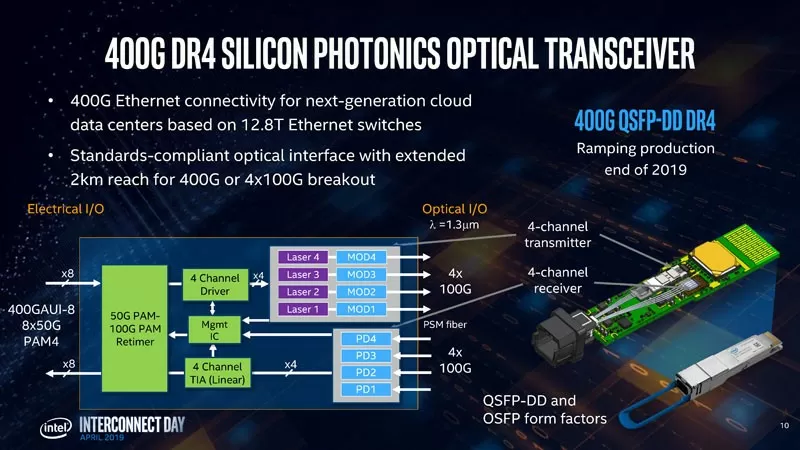
By the Way, at such speeds, the transceiver itself is already approaching the limitations of its form factor, and in the future the optics will be connected directly to the switch's ASIC chip, bypassing the transceivers. Integration of the transceiver part and the processor will allow building network switches with a switching matrix of 25.6 Tbit/s and 51.2 Tbit/s. Intel will show such solutions closer to 2020.
Ron Amadeo
17/04.2019









